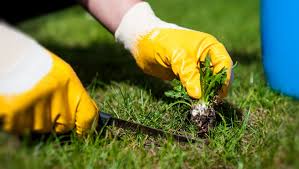Weed Control, Weeds are a common challenge for gardeners and landscapers alike. These persistent plants not only compete with desirable plants for water, nutrients, and sunlight but can also harbor pests and diseases. Effective weed control is essential for maintaining a healthy, thriving garden. Here, we’ll explore various strategies for managing weeds and keeping your garden in top shape.
1. Mulching: A Natural Barrier
One of the simplest and most effective methods of weed control is mulching. By covering the soil around your plants with a layer of organic material such as straw, wood chips, or leaves, you can suppress weed growth and retain soil moisture. Mulch acts as a physical barrier, blocking sunlight and preventing weed seeds from germinating. Additionally, organic mulch decomposes over time, enriching the soil with nutrients.
2. Hand Weeding: The Manual Approach
Hand weeding is a straightforward but labor-intensive method of weed control. Regularly removing weeds by hand, especially when they are young and their roots are still shallow, can prevent them from establishing and spreading. For the best results, pull weeds after a rain when the soil is moist, making it easier to remove the entire root system.
3. Hoeing: A Time-Saving Technique
Hoeing is another effective manual method for controlling weeds. This technique involves using a hoe to cut weeds off at the soil level. It’s particularly useful for larger garden areas and can quickly reduce the number of weeds. However, be cautious not to damage the roots of nearby plants when hoeing.
4. Herbicides: Chemical Control
For severe weed infestations, herbicides may be necessary. There are various types of herbicides available, including pre-emergent and post-emergent options. Pre-emergent herbicides prevent weed seeds from germinating, while post-emergent herbicides kill weeds that have already emerged. Always follow the manufacturer’s instructions and consider the impact on the surrounding environment when using chemical controls.
5. Weed Barrier Fabrics: A Preventive Measure
Weed barrier fabrics, also known as landscape fabric or weed cloth, can be laid over soil to prevent weed growth. These fabrics allow water and air to pass through while blocking light and suppressing weed seeds. They are particularly useful in garden beds and around established plants.
6. Cover Crops: An Eco-Friendly Solution
Cover crops, such as clover or rye, can be grown to naturally suppress weeds. These crops outcompete weeds for resources and, when tilled into the soil, improve soil structure and fertility. Cover crops are an excellent option for gardeners looking to reduce their reliance on chemical controls and improve soil health.
7. Regular Maintenance: The Key to Success
Consistent maintenance is crucial for effective weed control. Regularly inspect your garden for new weed growth and address issues promptly. Combining multiple weed control methods will provide the best results and help you maintain a healthy, beautiful garden.
Conclusion
Weed control is an ongoing process that requires vigilance and a combination of strategies. By using methods such as mulching, hand weeding, hoeing, herbicides, weed barrier fabrics, and cover crops, you can keep your garden weed-free and ensure that your plants have the best possible environment to thrive. Regular maintenance and a proactive approach will help you stay ahead of weed problems and enjoy a lush, healthy garden.
You Might Also Like These:



